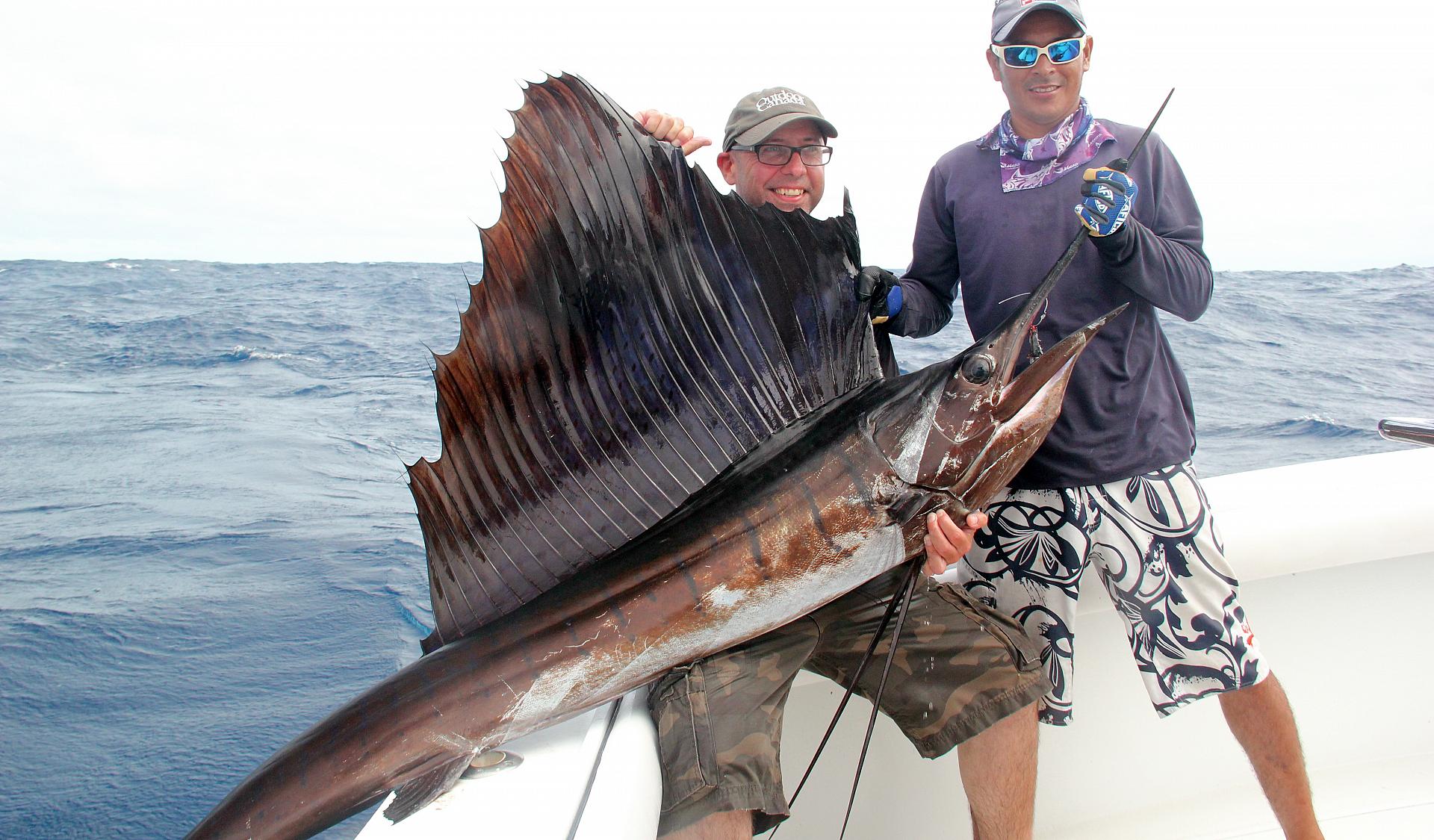Out of the blue
Off the Pacific coast of Guatemala, you never know for sure what you’re going to catch next—or when
Advertisement
With one foot casually propped up on the transom of Maverick, our 32-foot Blackfin sportfishing boat, first mate Noe Maeda Merina stares out at the vast blue Pacific and declares, to no one in particular, “Un pez es como muerte, porque nunca sabe cuando viene.” Translation? “A fish is like death, because you never know when it’s coming.”
Merina is acutely familiar with the unpredictability of the ocean, having nearly died in it himself. A few years back, he was working on a commercial fishing boat off Mexico when he got tangled in some rigging and hauled overboard. Before his crewmates could rescue him, a shark chomped into his thigh. I know he’s not exaggerating when he lifts up his quick-dry shorts to show me the huge scar. He almost died. Now here we are together in late September 2014, roughly 45 kilometres off the coast of Guatemala, and it’s me dying—for a fish to show up.
Advertisement
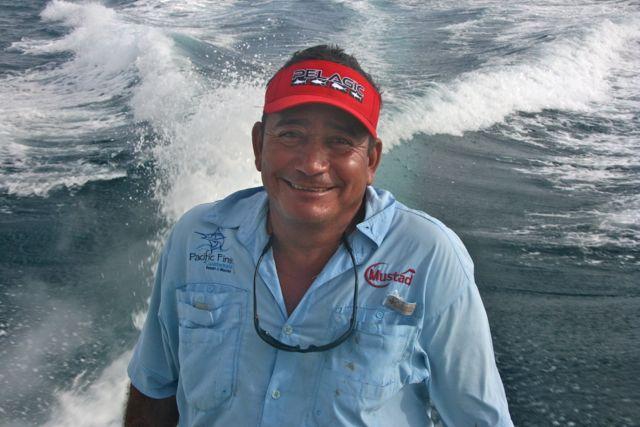
Fishing mate/philosopher Noe Maeda Merina
We’re nearing the end of our second of two days on the water—part of a four-day press trip to Guatemala—and the clock is ticking. Although I reeled in a hard-fighting and high-jumping dorado the first day, I’ve got my sights set on something bigger. I’m holding out hope for a marlin, but would happily settle for a sailfish. And they’re certainly here.
Guatemala is a star on the global billfishing scene because of what’s known as the “Pocket”—a deep underwater canyon, 25 kilometres wide and approximately 1,200 metres deep, located in front of the country’s only sportfishing port, Puerto San José. It’s the largest and most extreme underwater structure for almost 500 kilometres, and it serves as a hunting ground for trophy fish. Here, currents, water temperature and wind combine to create optimal conditions for bait. And where there’s a steady supply of bait, predators such as billfish will follow.
Helping matters, Guatemala banned commercial fishing for sailfish in 1997, so the sportfishing has only gotten better since then. Then in 2014, the Central American nation also created the National Commission for the Protection of Sailfish. Its mission is “to promote the socio-economic development of the coastal region in the Pacific Coast of Guatemala through sportfishing tourism for sailfish in a sustainable manner.”
Advertisement
Puerto San José, Guatemala
During the high season, from November to May, boats regularly release more than 30 sailfish in the 80- to 120-pound range in a single day. Even in the off-season, 15 to 20 releases are common. You can also catch blue, black and striped marlin, as well as dorado and yellow tuna. And that’s why I’m here, to get one of those incredible fish on the line. Not that I’m alone in my quest. I’m here with three other magazine staffers who’ve been invited by the Guatemalan government’s tourism department to sample the fishing and learn more about this fascinating country.
First there’s Bill Kearney, editor of Ocean Drive magazine and a freelancer for Florida Sportsman magazine. A hard-core inshore angler, Kearney doesn’t come across as the head of one of Miami’s high-society publications. He’s even shown up with some of his own jigging gear in case he has a chance to go for snapper or grouper, but his goal is to tick a Pacific sailfish off his bucket list. Next is Chris Woodward, editor of Sportfishing magazine. Her love of fishing and conservation is readily obvious to me when I notice the tattoo of a small blue circle hook on her ankle. She’s after a blue marlin. Finally, there’s Ozzy Delgado, director of sales and marketing with Guy Harvey Magazine. Originally from Cuba, Delgado now lives in Miami, where he regularly catches Atlantic sailfish and everything else the Sunshine State has to offer. He frequents some of the best billfishing spots in the Americas, but this is his first trip to Guatemala. And since he’s never caught a Pacific sailfish, that’s his target.
Advertisement
Located between Mexico and Belize to the north and Honduras and El Salvador to the south, Guatemala is already a popular spot on the adventure travel circuit. In fact, I was here 20 years ago when I was in my mid-20s working as a tour guide with the Canadian travel company GAP Adventures. I led groups of tourists through the country as we made our way by public transport to Mexico. Back then, I’d see balding, paunchy middle-aged sportfishermen and feel a little sorry for them. They’re not going to see the real country, I’d think naively, as I boarded a rickety bus for a gruelling eight-hour trip to a run-down hostel in the jungle.
Now that I’m balding, paunchy and middle-aged, I’m happy to call myself a sportfisherman. And while I still like adventure, I don’t mind some comfort, too. Our four-star accommodations back on land, Casa Vieja Lodge, are about as different from a backpacker hotel as you can get. Truthfully, I feel fortunate to be here at all.
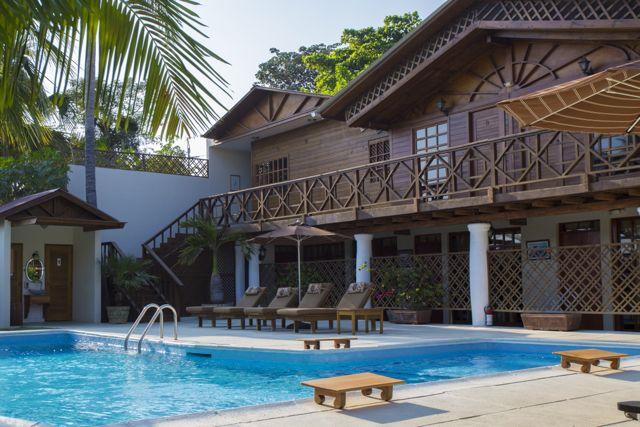
You see, my spouse recently gave birth to twin boys, so when I got the invite to go on the trip, I figured my chances of actually accepting were extremely slim. We also have a young daughter, so life is busy. And crazy. But nothing helps me more to deal with crazy than time in the outdoors, so I presented my case. After some negotiation, which may have involved back rubs, and securing help for her from friends and family, my spouse gave me the go-ahead. Yeah, I know, I’m lucky.
But I’m hoping to get luckier.
***
The first day on the water didn’t go exactly as I’d planned. I only got four hours sleep thanks to a late flight from Canada, so when we left our hotel in nearby Antigua around 5 a.m. for the 1½-hour drive to Puerto San José, I was wiped. And once we arrived at Casa Vieja Lodge, we had just enough time to scarf down a quick breakfast and drop our luggage in our rooms before heading to the local marina. There we boarded our first charter, a 31-foot Bertram boat named Piragua, provided by another key operation in the local sportfishing scene, Pacific Fins.
Because I was sleep deprived and a bit frazzled, I didn’t dress properly for the searing sun, and I forgot to take an anti-nausea pill or attach my motion-sickness patch. I don’t usually get seasick, but when I’m travelling 5,000 kilometres from home, I like to eliminate the possibility. Naturally, when we reached the fishing grounds about 40 kilometres offshore, the two-metre waves were rolling in steadily. Still, I was confident my excitement would keep any nausea at bay, as I took in the sights and sounds of the crew busily setting up the considerable array of rods.
In all, they rigged four rods with ballyhoo, the bait trolled just under the surface, and two more with artificial teasers, which skipped along the surface at the side of the boat. We weren’t trolling long before one of the rods started bouncing and—pop!—the line unclipped from the outrigger and started to run. One of the mates pulled it out of the holder, engaged the reel and tugged. A hundred metres back, a brilliant-yellow dorado sprung high out of the water. Fish on!
No one seemed too eager to jump on the rod, so I volunteered. Maybe they see dorado as some kind of nuisance fish, I thought. But I sure didn’t, especially since it was my first dorado. And make no mistake, like most ocean fish, it was strong. I steadied the butt of the rod on my thigh and began to reel, waving off the offer of a belt because I didn’t want to look like a wimp. After 10 minutes, though, I gave in and accepted the belt.
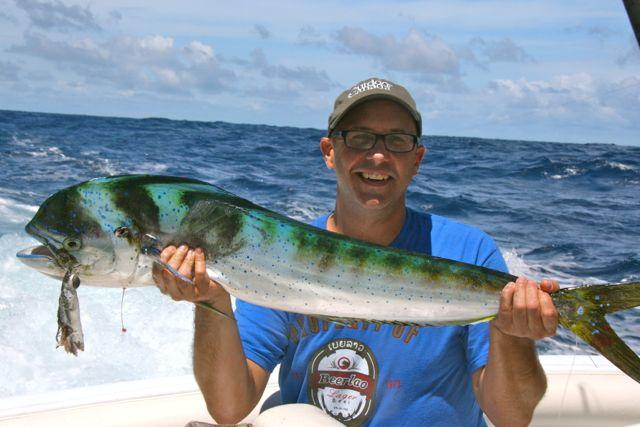
The author with a dorado.
While I’m a fair-to-middling freshwater angler, my deep-sea experience is limited. Back in 2009, I caught a sailfish in Costa Rica, but that hardly qualified me as an old salt. All of which explains why, as I fought the dorado, I didn’t realize I should have moved the line across the reel manually with my thumb to keep it from getting jammed. So, what should have taken five minutes took me nearly 15. I got the dorado in, though, and watched in amazement as the crew gaffed it, hauled it aboard and tied its tail fin to its weird alien-like head to keep it from flipping around. They then cut off fillets and made some of the best ceviche I’ve ever had.
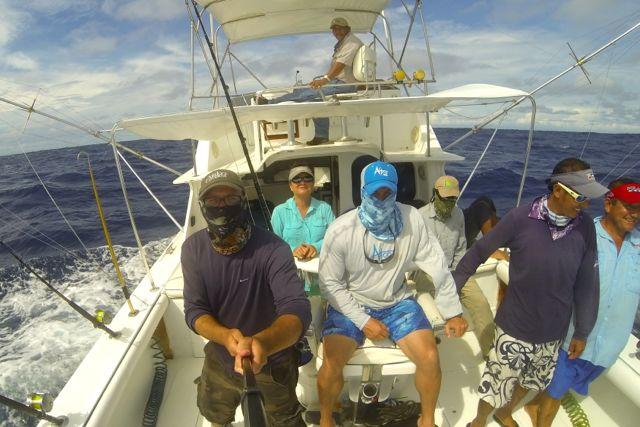
The anglers waiting for a hit.
After the dorado, I had some time to wait before it was my turn on the rod again. The lulling motion of the waves began to catch up with me, so I lay back to rest my eyes. That’s the thing about offshore trolling for billfish—there can be a lot of down time. But in a flash, all hell can break loose. I had barely shut my eyelids, in fact, when the captain started shouting, “Marlin! Marlin!”
At that, Ozzy Delgado grabbed the on-board marlin rod specially rigged with mackerel and cast back toward the huge fish. It took the bait and ran toward the boat, forcing Delgado to reel furiously to take up the slack. The marlin nearly touched the transom before speeding off and jumping, causing everyone on the boat to collectively roar, and for me to start scrambling for my camera. The chaos that normally occurs when a 350-pound fish is on the line was soon amplified tenfold when everyone also started scrambling around trying to take photos. It was as if we were paparazzi fighting to get a shot of Brangelina.
Delgado wasn’t bothered by the commotion, though, and he handled the fish like a champ. The marlin took several runs both at and away from the boat, giving us a major aerial show at times. After roughly 30 minutes, Delgado got the fish close enough for one of the crew to wrap his hand around the leader when—snap!—it was gone. Still, a leader touch counts as a catch and Delgado was happy.
Afterwards, he lay back on the boat’s cushions and glowed. “I’m sorry, guys,” he said a little sheepishly. “I’m still high from that right now.”
Chris Woodward echoed his sentiment. “It’s better than crack, right?” she said, laughing. “Not that I’ve smoked it, but you know what I mean.”
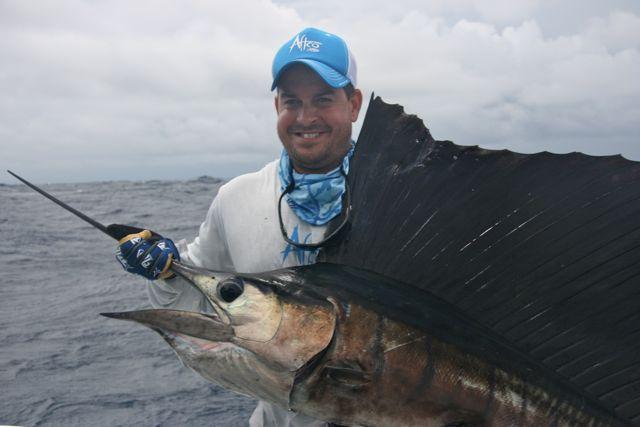
Angler Ozzie Delgado with his Pacific sailfish.
It’s that very high I’m now after aboard the Maverick as our final hours of fishing gradually slip away. It’s my turn again on the rod, and while I wait, I ask Delgado for advice on how to hook and fight a billfish. For starters, he says, it’s not like bass fishing when you can set the hook as soon as you feel a bite. With the circle hooks we’re using, you instead have to let the fish run until it turns the bait in its mouth before you engage the reel. “Let him eat and eat that thing until it reaches his anus,” Delgado says, half-jokingly.
As if right on cue, one of the rods pops, and I pull it from the holder. As directed, I let line go for an agonizingly long time before I finally engage the reel. Nothing. It might have been a fish, but it was more likely tripped by some passing debris or a wave. At least that’s what I tell myself. I’m starting to feel nervous about getting blanked when another rod soon pops and Delgado grabs it, waits even longer to lock in the reel and hands it to me.
I feel a bit lame I didn’t actually set the hook myself, but that minor shame disappears when the sailfish jumps and completely clears the water. What a sight! It’s hooked solidly, but I’m careful to keep pressure on the line as one of the crew buckles a fighting belt around my waist. The belt has a small metal bar where the butt of the rod sits, making it easy to get leverage when I’m pumping the rod up and down, and before I know it, I’ve got the fish at the side of the boat.
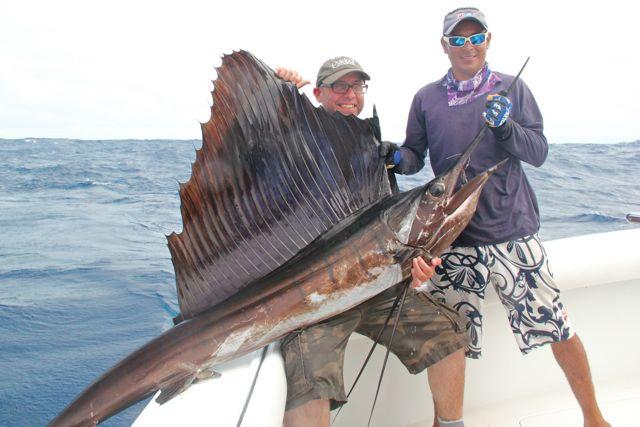
The author’s prize sailfish.
Another one of the crew members reaches down to pull the sailfish up to the gunnel, where I get a few quick pictures, give it a friendly pat on the side and let it go. I’m not sure I experienced a crack high, but it’s a pretty damn good feeling and a great way to cap off our time on the water. Over the two days, we caught four dorado, two blue marlin, four sailfish and raised even more of each. That’s certainly not bad for the off-season. And more than worth the wait.

